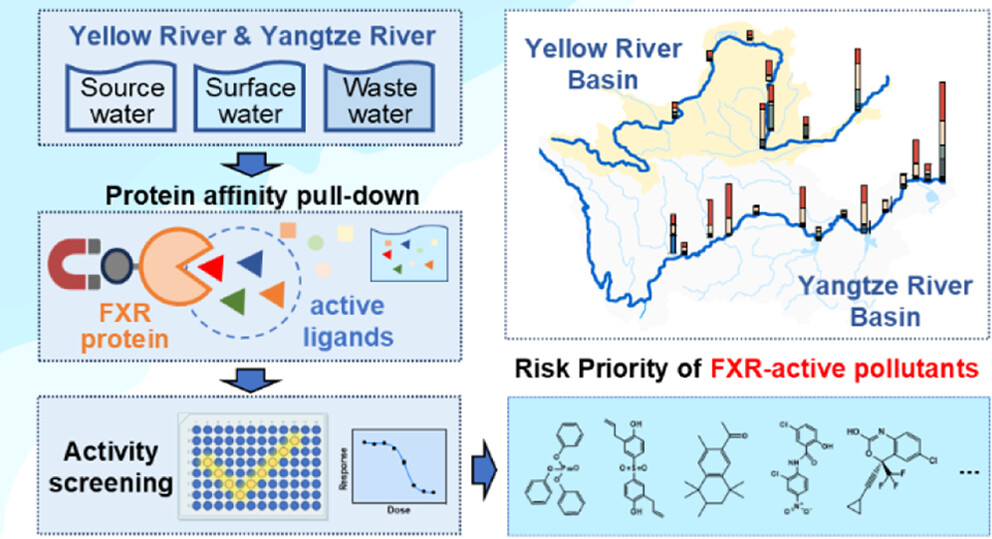Protein-Affinity Guided Nontargeted Analysis Reveals the Widespread FXR-Antagonistic Pollutants in Surface Water and Source Water Along the Yangtze River and Yellow River
Yi Yang, Ling Jiao, Fusheng Guo, Yibin Sun, Hongyang Cui, Xiaoguang Lei, Jianying Hu, Yi Wan*
Environ. Sci. Technol. 2025, 59, 5, 2368–2377.
Metabolism-disrupting chemicals (MDCs) have attracted widespread attention due to their contributions to the prevalence of metabolic diseases worldwide. The farnesoid X receptor (FXR) is a typical lipid-sensing nuclear receptor and plays a crucial role in the development of metabolic diseases. However, few studies have examined the FXR activities of environmental samples and the corresponding MDCs. In this study, we found FXR-antagonistic activities in 93.6% of source water, surface water, and wastewater samples (n = 78) collected from the Yangtze River and Yellow River. An FXR protein-affinity guided nontargeted analysis was performed and identified 79 potential FXR-active pollutants in samples from these two rivers. Nine of these pollutants exhibited strong FXR-antagonistic activities (IC50: 2.39–141.9 μM), and 6 pollutants, including triphenyl phosphate (TPHP), 4,4′-sulfonylbis[2-(2-propenyl) phenol (TGSA), tonalid (AHTN), dichlorophen, etoxazole (ETX), and loratadine, were identified to be FXR antagonists for the first time. The total concentrations of the nine FXR-antagonistic pollutants were relatively high in the middle and downstream reaches of the Yellow River and the downstream reaches of the Yangtze River, and two pollutants (TGSA and ETX) have not previously been found in aquatic environments. A risk prioritization analysis revealed that TPHP, TGSA, and AHTN are priority pollutants with the potential to affect the FXR. Appropriate management of these priority pollutants would reduce the health risks of metabolic disruptions associated with exposure to these MDCs.
